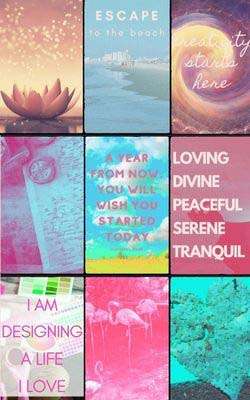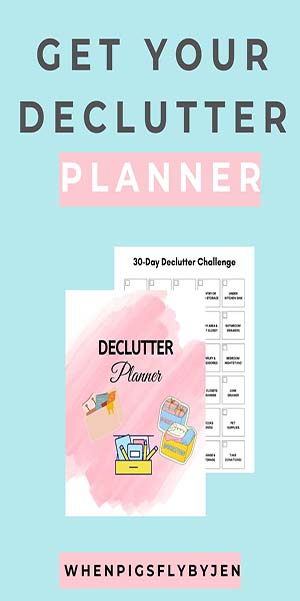Sick of hearing the words content creation? Or worse, the phrase content is king? Do you agonize over your posts each week? Do you agonize over your blog each week as you write your post, creating your social media images and publishing all on the same day? I know how this feels. I’ve done it myself, as recently as just a few months ago. And then I learned how to make content creation not suck for me. And I hope I can help you.
Why We Procrastinate
Ok, maybe some of you are professional procrastinators and no matter how much content you have planned in advance, you’ll find a way to not post something until the day that it posts. I can help you develop that content, but I cannot make you create the post in your blog.
But others who struggle because you’re not sure what to write about each week, even if you’ve had a blog for a while. Or you’re new to blogging and just haven’t settled on what to write about, so you write about everything. But even that is agony because it’s all just a crapshoot each week.
What to do About It
It’s time to make a plan for your blog and get more specific as to what you’re writing about and also when you’re going to post. Just this one small change can take a lot of pressure off…but it’s not the only thing we’ll focus on today.
Decide On Theme
Deciding on your main theme doesn’t mean that you can only write about that one thing. But that theme will carry your blog through the long term. Once you establish a theme, you can have some small offshoots, blog posts that don’t quite fit the theme, but they won’t be the majority of your posts. Your theme depends on a couple of things like who you are writing for, what you want to write about, and what your readers want to read from you.
Who Is Your Reader?
First, determine who you are writing to. Is it someone like you who has the same likes, desires, and needs? It helps if you write out who you want your reader to be. Who is the person you are trying to reach? And then write out why they are coming to your blog. What do they want to read from you? Why are they coming to you instead of some other blogger?
What Do You Want to Write About?
Then it’s time to look at what you’ve been writing about and determine if the blog posts that you’ve been writing are meeting the needs of the reader that you want. Maybe all are, maybe none are. But maybe, just maybe, you have some that fit into who you are writing for and what they want to read.
One thing you may notice is that I write about what’s important to me. I love creativity, Vision Boards, and I try to inspire myself to try new things and start over when needed. My blog supports who I am and what I want to know and do. You may find that other people do the same thing. A lot of Finance bloggers started because they were trying to get themselves out of debt. A lot of Midlife bloggers are trying to take control of what the second half of their life looks like.
If you look at my blog, inspiring mid-life women is my main theme and I use it to get people to try new things, start over, explore their creativity, and use Vision Boards to support their new goals. These are not only the main posts that I create they are also the main categories that you’ll find on my blog. For variety, I also have family posts and some of my most popular posts are Mommyisms about the funny things my mother used to say.
Before I figured out what my blog was about, I used to include a lot of other stuff like some recipes, quotes, and things that didn’t really fit in with what I wanted to write about but seemed popular with other bloggers. That actually led me to burn-out and I stopped blogging for a month while I determined what it was I wanted to do and where I wanted to go with my blog. Let’s try to avoid that for you!
What Your Readers Want to Read
Now it’s time to look at your site stats and find out what your most popular posts are. Do they fit into who you are writing for? Do they fit in with what you like to write about? Can you create a theme around them? For me, 4 of the top 10 posts on my blog in the last quarter are about Vision Boards, which makes sense because I recently published a book about Vision Boards. Another two posts are about Starting Over. Both of these fit in with my theme of inspiring midlife women. The other posts that make up the top 10 are one-offs that were new in the past quarter.
I like to look at the last quarter because that tells me what people are currently interested in, but I also compare that to the past year to see what’s holding up over time.
Now that you know which of your blog posts that people like the most, it’s time to compare them side by side. Do you like the subjects? And do they fit in with the reader you are trying to reach? Do you even want to write more posts about these things? Do they support what you want to know and do? Can you find an underlying theme that will tie them all together? Can you create categories that these posts would fall into?
If you’re new to blogging and don’t really have enough posts to compare, then think about what you would want to read and if that fits in with what you want to write about. Pull that information together to find your theme and then determine what categories will go with your theme.
Brainstorm
Now you know your theme and the categories that you’re going to be writing out. It’s time to do one of my favorite things…brainstorming. I have fun with it because there are so many different ways that you can do it.
The tried and true method is to write your category idea in the middle of a circle on a piece of paper and then draw lines out from the circle. On each line write down a different thought. Maybe some lines get their own sub-lines with additional words, but maybe not.
That’s one way to do it. Another way is to try different online idea generators. They’re fun to use and sometimes, they’ll actually give you a great topic to explore. With these tools, you enter keywords and they will generate subjects or titles for you to work with. The goal is to find something that clicks for you, something that makes you want to write.
Hubspot has a tool where you put in up to 5 different nouns and it will generate 5 different topics for you in the free version. You can get even more in their paid version.
SEOPresser is another great tool. This one creates titles based on your keywords that are SEO friendly.
TweakYourBiz Title Generator is another tool in which you enter your topic, tell the system whether it’s a noun or a verb and then hit submit. I tried this one and it generated 10 pages of ideas for me. Granted, 90% of them will be throw-aways, but there’s a lot of things on there that I hadn’t thought to do before and they make sense for my blog.
I hope you have fun with these tools. There are a lot of other ones out there. All will help you with content ideas and blog post titles, but that’s it. What you write about is next.
Time to Write
Now it’s time to write, but unless you’re filled with passion about any one idea, let’s break it down first. Pick 5 or 6 of the topics that you created during your brainstorming session. Or you can pick one topic for each of your categories. For each topic, you’re going to create an outline for the post that you want to write.
In each outline try to have at least 3 main headings. In at least one or two of your headings, you should develop subheadings to take the topic a little deeper. But if you find yourself creating too many subheadings, stop and determine if you could break that out into two different headings.
Once you’ve developed outlines for each of your topics, it’s time to write your posts. But don’t create an outline and then write a post. First, create all the outlines. Then start writing out your posts.
I recommend doing these on two separate days, if possible. If you only have one day to get out as much as possible, I recommend writing the outlines then taking a break. Do something mundane like dusting, folding clothes, or washing your dishes by hand. When you’re done, you can go back and write out your posts.
This section is key. If you can get into the habit of writing several posts at a time like this, then you will be able to get out of the struggle and have something all set and ready to publish ahead of time.
How Many Times Will You Post?
Now that you know your theme, categories, and have several posts ready, it’s time to determine when and how much you’ll post. Many bloggers who blog about blogging will tell you that at the beginning you need to blog every day or 5 days a week or at least 3 days a week.
I don’t blog about blogging, but I do write about creativity and content creation. And I can tell you that writing too much can lead to the trouble of not having well-written content. I tried a 30-day blogging challenge where I had to write 30 blog posts in 30 days and I can tell you that after about two weeks, it was just turned into shit. Pictures and quotes with no real content and no rhyme or reason except that I had to publish something.
Don’t commit to that unless you really have something to say and can write enough posts. And then I’d still say, don’t start writing a blog post each day as soon as tomorrow. Write a bunch of posts first and then schedule them, that way you’re writing “ahead.” I’d even suggest starting out with one blog post a week and then once you see that you’re in the habit and feel like you’re in a good place, then you can add another.
Right now, I’m only writing one main post and then also a photography challenge post. At one point, I was writing the main post on Monday, a follow-up post on Wednesday, and then a Creativity Prompt on Friday. That all got to be a bit too much when I was caring for my mother so I pulled it back to one main post. It’s up to you to find what works best.
Plan It Out
I’m big on planning out things and that includes blogging. I like to have an idea of the type of posts I’m going to publish each week. I generally try to do a different category each week, although, with the rollout of my book, I took liberty with that schedule. (Hey, it’s my blog…my rules!)
Now that you know your categories and you have some posts ready, you can create a schedule for when you’re going to post. This includes not only what you’ve already written, but creating a schedule where you know what you should be planning for a month or two or more in advance.
You can do this with a wall calendar, your Google calendar, or any datebook or bullet journal you use. But once you decide the days of the week that you’re going to publish, then you should start writing in the categories for the types of blog posts that you’re going to write about. Once you know the titles, like the above posts that you just created, you can write those in.
With all that done, it’s time to start creating and scheduling your posts. Of course, there’s more to it, like creating your social media images, keywords, etc. But you should now have the tools to get your posts written without procrastinating. Let me know if this format helps you develop your posts or if you have some other suggestions on how to develop content.










This was such a well-written, organized post. I especially liked your point about creating quality content over just pumping stuff out for the sake of it.
The number of posts definitely does and should vary from one site to the next. I don’t think it’s possible to say that X number of posts per week is ideal for everyone!
Exactly, it’s impossible to say that every blogger needs to follow this specific blogging pattern. We each have to take what works for us and leave what doesn’t.
Some great ideas, some great reminders. I’m printing out this post so I can keep it for future reference, for the times when my blogging juices fail to flow. Thanks!
I’m glad you liked it, Tom.
I love the idea of looking at stats. For me, any post (and I mean any!) on my pets has seen traffic/comments/shares go up. It’s even caused me to write a little book about them. Thanks for more great advice.
I love your pet posts, too! But I think the ones involving your husband thinking he’s helping, are the funniest.
Very catchy title and I enjoyed reading your post Jennifer. Yes, I am in full agreement over good content vs excess publishing just for the sake of it. Puts me off a blogger even the best ones.
Thank you, Suzanne. Sometimes you just have to have some fun, and possibly a little shock value, with titles.
You do indeed and what’s life without having fun ?
Jennifer, Great article! Thanks so much!!!
You’re welcome!